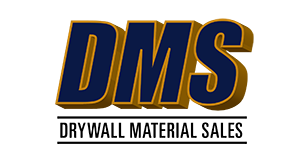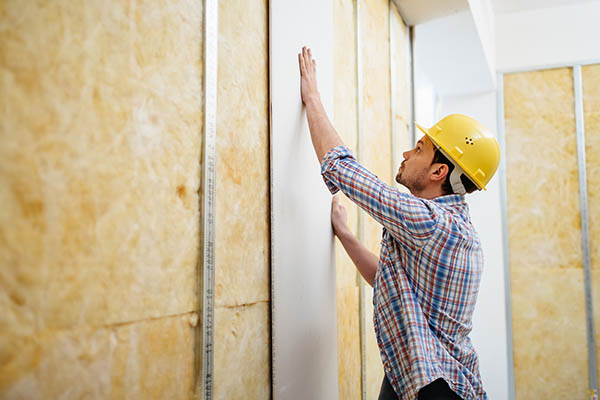- Mold/moisture resistant
- Fire resistant.
Mold and Moisture Resistant Drywall Applications
Mold and moisture resistant gypsum boards, commonly referred to as “green board” or “purple board,” have different types of backers (also known as mat or facers) that surround the core. Rather than the usual paper, the core receives a treated paper or fiberglass mat which resists the migration of water vapor into the gypsum interior. Fiberglass, while repelling moisture, also discourages fungal growth.
Green and purple backing will protect the gypsum core of the board from water vapor and humidity, making them the best option for:
- Bathrooms
- Utility rooms
- Laundry rooms
- Kitchens
- Basements
- Crawl spaces
- Work-out rooms
Any place where ambient or periodic humidity tends to be higher than the rest of the home can benefit from green or purple boards. They won’t draw in moisture or offer an easy habitat for mold and mildew.
While moisture resistant gypsum panels hold up better than traditional drywall in areas that receive unusual amounts of vapor, they do have limitations. Wherever water contact is frequent and direct — such as tub and shower surrounds, saunas and backsplashes — use concrete backer boards instead.
Applications for Fire-Resistant Drywall
The mineral matrix of gypsum naturally retains water, even when it appears dry. Although gypsum boards are inherently fire resistant to some degree, those products with fire ratings are designed to perform even better than regular drywall.
Flames or intense heat drive the moisture trapped within the wallboard core out the cooler side. As the gypsum gives up its water, it tends to shrink, crack and eventually turn to dust. With additives mixed in the gypsum slurry at the factory, fire resistant boards both hold the moisture longer in a fire and resist shrinking.
The longer the board can maintain its integrity and position on the wall or ceiling, the better. Created specifically to hold shape longer under intense heat and flames, fire-rated wallboards can serve as a temporary barrier while building occupants flee a conflagration.
Formulated with chopped fiberglass in the core, fire-resistant drywall comes in two types:
Type X — rated to stand up to direct flames for one hour
Type C — designed as a ceiling board to avoid shrinking and falling under its own weight long enough for people to escape the home.
Because some rooms carry a known fire risk, building codes often require Type X or C in:
- Detached Garages
- Walls between attached garages and living space
- Furnace/Utility rooms
- Kitchens, especially for the ceiling
- Rooms with fireplaces
- Multi-family residences
With a wide variety of drywall formulations and thicknesses available, you can even combine fire-resistance with moisture resistance in one board.
For help determining which drywall types you should use, please call DMS. We’re ready to lend our combined decades of experience and expertise to see your project succeed. Call us today!

